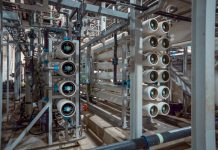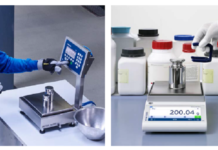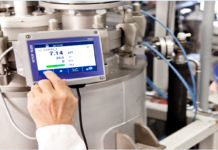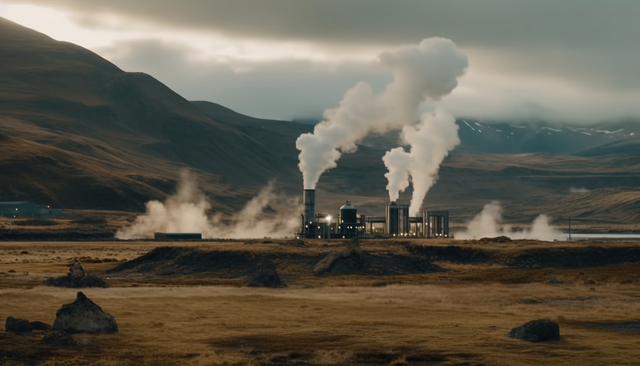Geothermal energy, harnessed from Earth’s heat, is a renewable power source with immense potential. Offering reliable baseload electricity, it emits significantly lower carbon than fossil fuels. Despite high initial costs and location constraints, advancements like Enhanced Geothermal Systems are expanding its reach, making geothermal energy pivotal for global decarbonisation and sustainable energy goals.
Drilling Deep
Deep inside the earth naturally occurring radioactive elements are slowly decaying and releasing heat. This is the source of geothermal energy, which International Energy Agency (IEA) has projected to meet 15% of the global electricity demand by 2050. According to one estimate, just 0.1% of the earth’s heat could supply humanity’s total energy needs for two million years.
Origin
Archaeological evidence points to the use of geothermal energy at least 10,000 years ago. Our ancestors viewed hot springs as sacred spaces imbued with healing powers. Romans used geothermal energy for heating their homes. Geothermal energy was first harnessed for industrial use in 1816 in the Tuscan region of Italy, where Francois de Larderel, a French engineer, pioneered a process to extract boric acid from hot springs. The town that developed around boric acid production came to be known as Larderello, and in 1913 became the site of the first commercial geothermal power plant. It had a capacity of 250 KW. The site has now expanded to 34 plants with a total capacity of 800 MW, making Italy the 6th largest producer of geothermal power. Top 3 producers of geothermal power in the world today are USA, Indonesia and Philippines. Presently, geothermal energy meets less than 1% of the global demand.
Technologies
There are different methods to harvest geothermal energy depending on the geological conditions of the region, the temperature of the geothermal resource, and the intended application. Low-temperature sources can be directly tapped for space heating and industrial processes like drying. Temperatures at about 10 metres below the surface remain relatively constant throughout the year, and geothermal heat pumps take advantage of this to exchange temperatures, heating homes in the winter and cooling homes in the summer. The simplest and the most common way to use geothermal energy for producing electricity is to tap into the natural reservoirs of hot water or steam lying below the earth’s surface. The steam is then used to drive a turbine. Alternatively, the high-pressure hot water from the geothermal reservoirs is flashed to produce steam which then drives the turbine. The binary or organic Rankine cycle is used when the geothermal resources are not hot enough to produce steam. It uses a secondary fluid like isobutene or pentane with a lower boiling point than water.
Enhanced Systems
Enhanced Geothermal Systems (EGS) create artificial geothermal reservoirs in locations where conventional natural resources are not available. This is accomplished by drilling deep into the earth’s crust to access hot, dry rock formations. Water is injected into these formations and a closed loop system is established. The water circulating through the hot rocks absorbs thermal energy from the rocks and is converted into steam on reaching the surface, where it drives a turbine to generate electricity. The condensed steam is injected back into the ground to complete the loop.
Drilling
Drilling is a critical component of EGS, as it involves reaching deep, hot rock formations to create artificial reservoirs. Modern drilling techniques allow for precise targeting of geothermal reservoirs, including creating horizontal wells to maximize the contact area with hot rocks. Hydraulic fracturing techniques – widely used by the oil and gas industry – are now being used to crack open relatively solid rocks, at depths much greater than existing geothermal wells. Geothermal projects frequently encounter hard rock formations which present challenges for traditional petroleum drilling techniques. Because of the high temperatures and hardness of the rock, conventional petroleum drill bits frequently break down in geothermal wells. Technological advancements like thermally stable polycrystalline diamond compact bits hold the potential for enhancing robustness and efficiency in harsh environments. Among the promising techniques are laser-assisted drilling and high-pressure water jet-assisted drilling. Drilling rates and bit longevity can be increased by using high-pressure water jets to cool the drill bit and remove debris.
Supercritical Systems
Supercritical geothermal systems use water at temperatures and pressures above its critical point (373°C and 22.1 MPa), where it exists as a single-phase fluid with unique properties. In this state, supercritical water has the density of a liquid and the viscosity of a gas, allowing it to transfer heat more efficiently. These systems tap into deep geothermal reservoirs, often in volcanic regions, where such conditions naturally occur. By extracting this high-enthalpy supercritical water and using it to drive turbines, these systems can generate significantly more energy than conventional geothermal plants, unlocking vast potential in areas with extreme geothermal gradients. Supercritical geothermal technology is still in its experimental stages.
Advantages
The main advantage of geothermal technology over solar or wind is that it does not depend on season or time. This gives it a high capacity factor. As the energy source is continuous, geothermal power plants can operate at their maximum capacity throughout the day and year. On average, global geothermal capacity had a utilisation rate over 75% in 2023, compared with less than 30% for wind power and less than 15% for solar PV.
According to the National Renewable Energy Laboratory (NREL), USA, geothermal energy has the smallest lifecycle carbon footprint of all renewable energy technologies. However, geothermal energy lags behind wind and solar in terms of both growth rate and installed capacity. The main reasons for this are high initial investment, long payback time and construction time, difficulty to assess resource and difficulty to modularise.
Start-ups
The geothermal energy sector has experienced a notable increase in start-up activity globally. There are currently about 600 companies operating in the geothermal energy space, with 153 of them having secured funding. AI has also entered the action and is being used to identify ideal drill sites. The global rise in geothermal start-ups is partly driven by the increasing energy demands of artificial intelligence (AI) technologies. Tech giants like Google and Amazon are seeking sustainable energy sources to power their data centres, leading to a surge in geothermal energy start-ups.
Indian Scenario
In India, the geothermal energy industry is still in its nascent stages. The Geological Survey of India has identified approximately 350 high-potential sites capable of producing around 10,600 MW of geothermal power. A 20 KW demonstration plant based on Organic Rankine Cycle has been set up in Manuguru, Telangana.
Challenges
Despite its advantages, geothermal energy faces several hurdles. Drilling and exploration account for up to 50% of project costs, making geothermal projects capital-intensive. Uncertainty in locating viable geothermal reservoirs and the potential for drilling failures pose significant financial risks. In some cases, geothermal projects may release trace amounts of greenhouse gases, such as methane and sulfur dioxide, or lead to land subsidence. Approval processes for geothermal projects can be lengthy and complex, delaying deployment.
Solar and wind energy have seen dramatic cost reductions and faster deployment rates, overshadowing the growth of geothermal energy.
Epilogue
Geothermal energy holds immense potential as a reliable and sustainable energy source. Its ability to provide baseload power and reduce carbon emissions makes it indispensable for global decarbonisation efforts. While challenges remain, ongoing technological innovations, policy support, and investments are paving the way for significant growth in the sector. By unlocking Earth’s hidden heat, geothermal energy can play a pivotal role in achieving a sustainable and low-carbon future.
Readers’ responses may be sent to: k.sahasranaman@gmail.com or chemindigest@gmail.com































